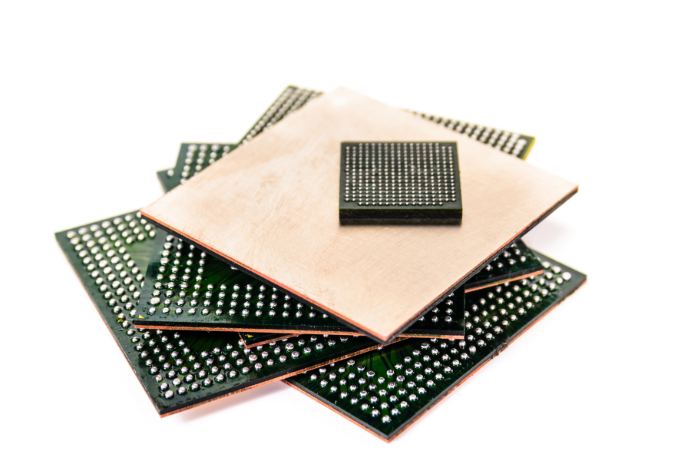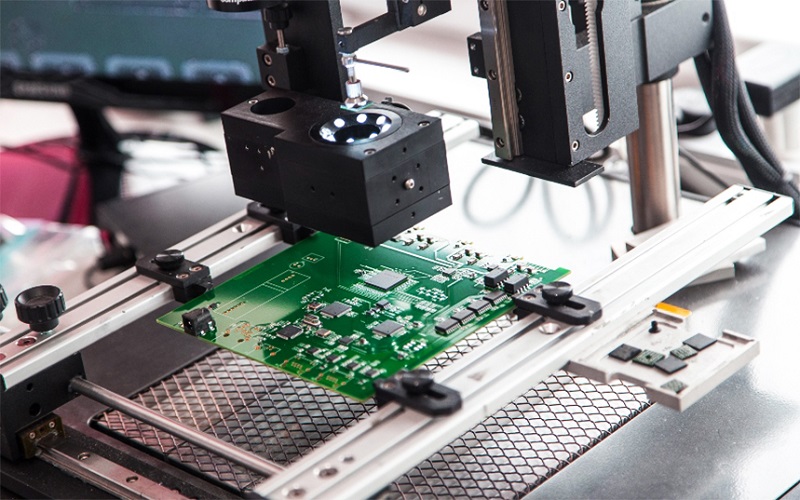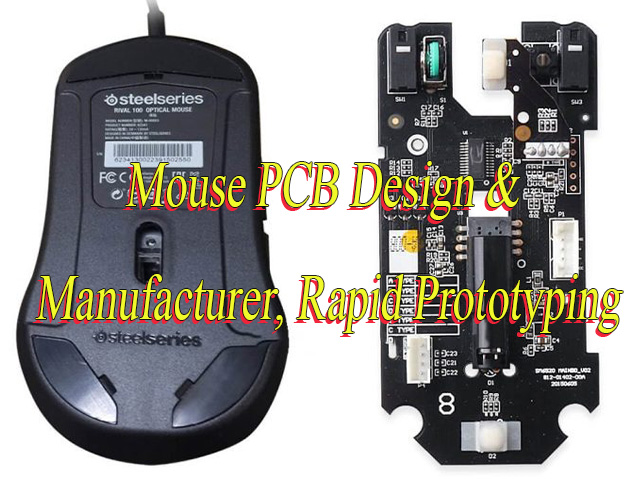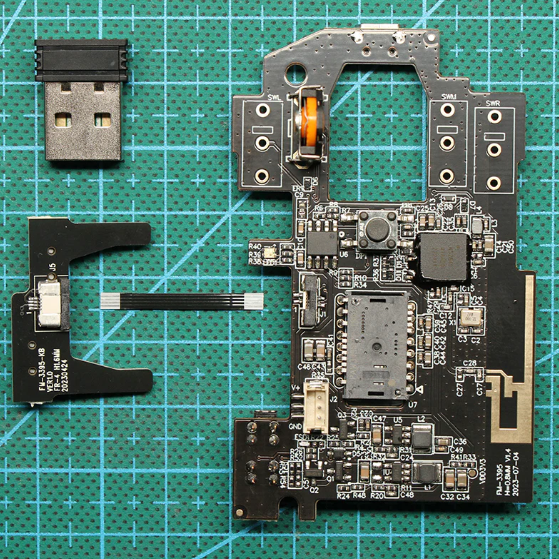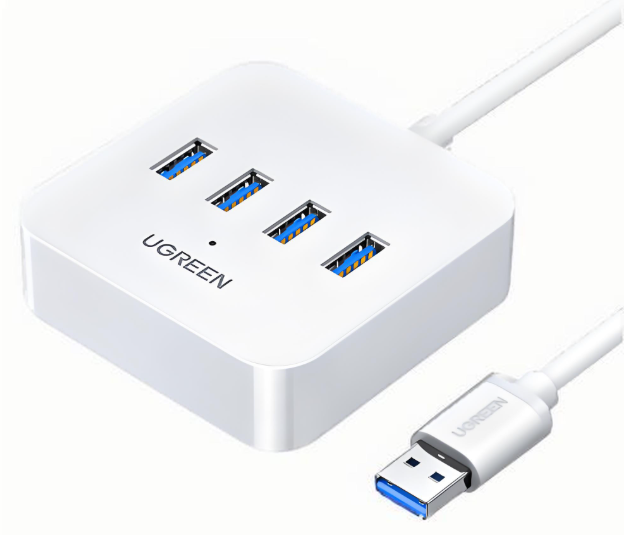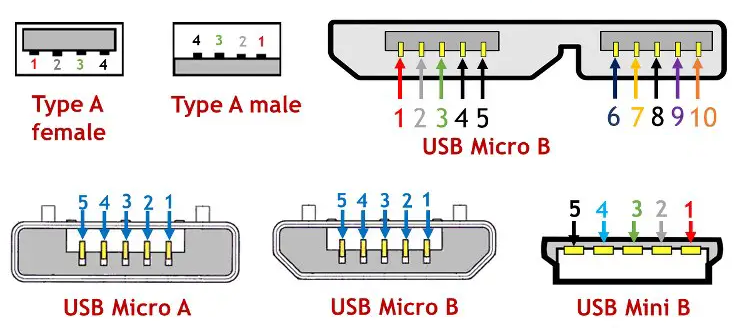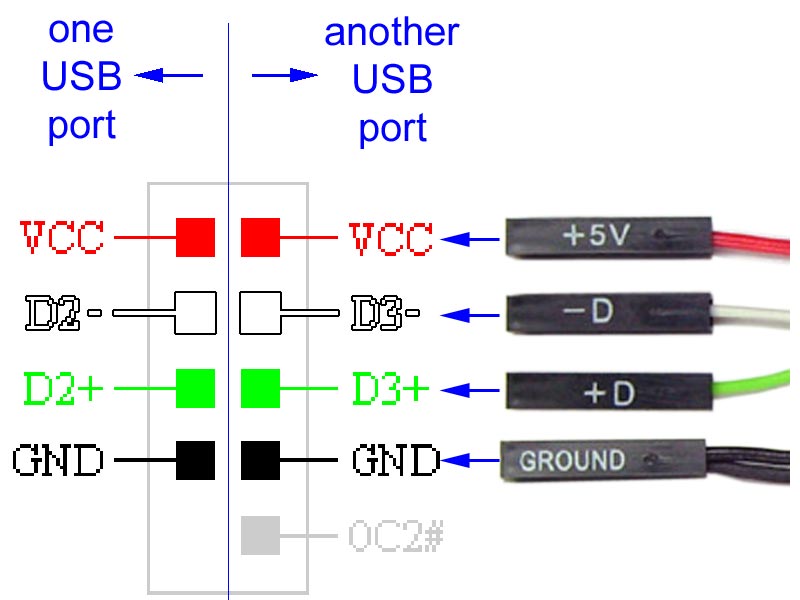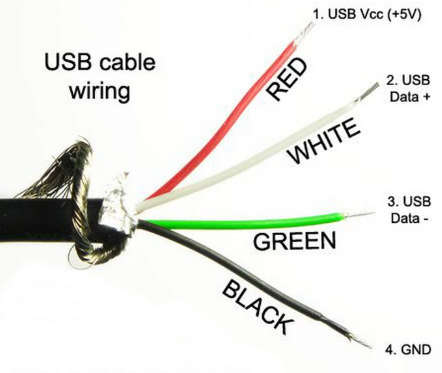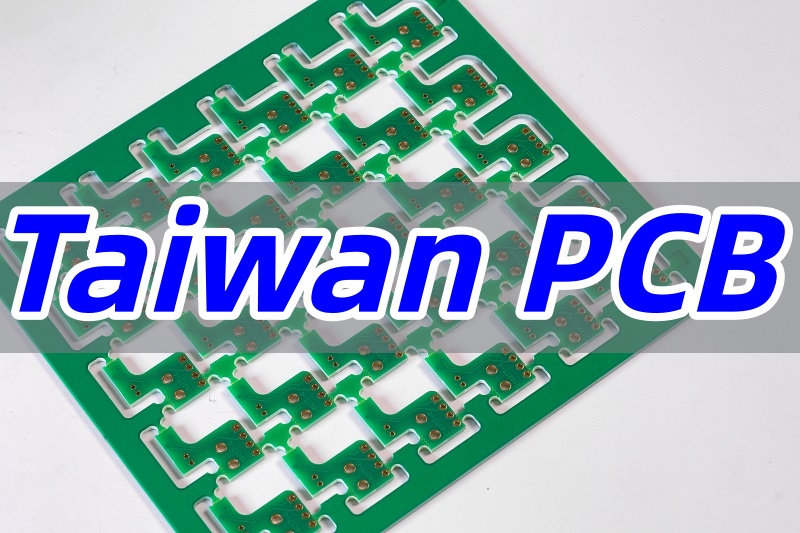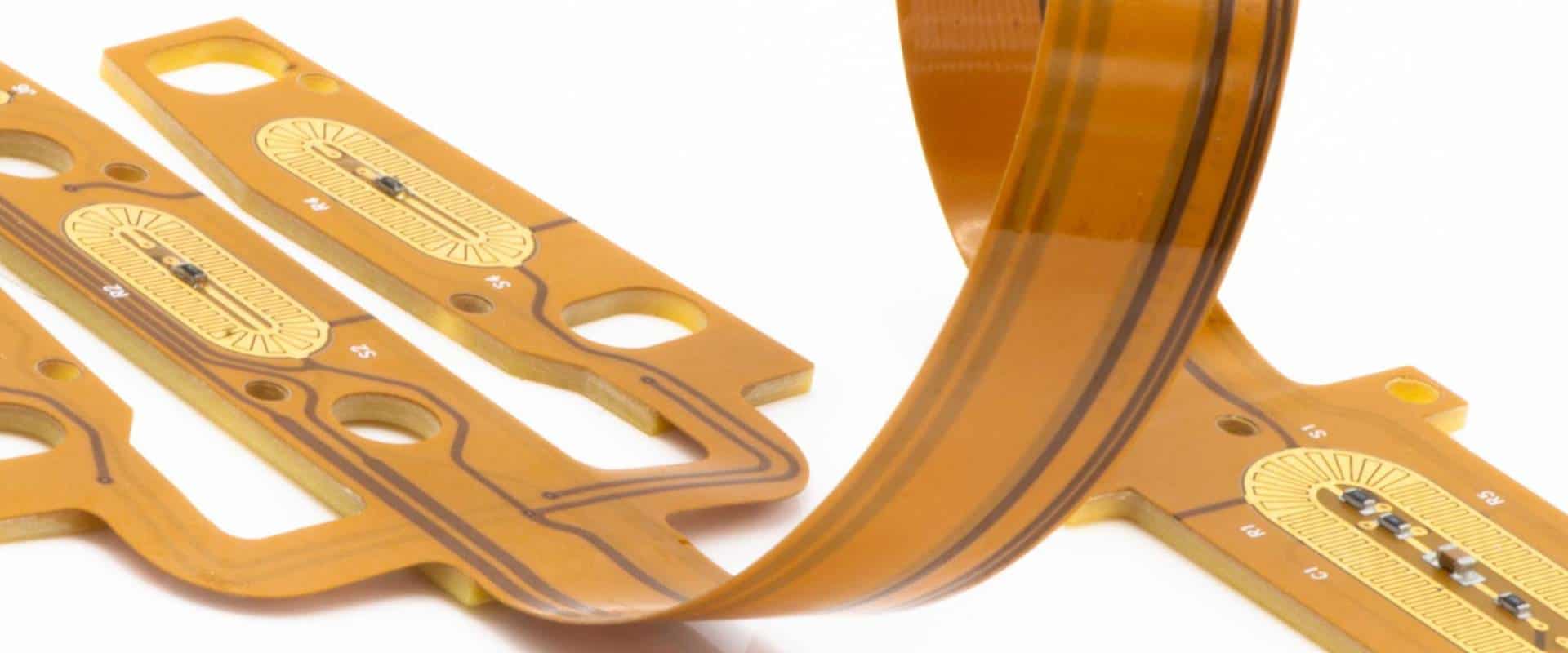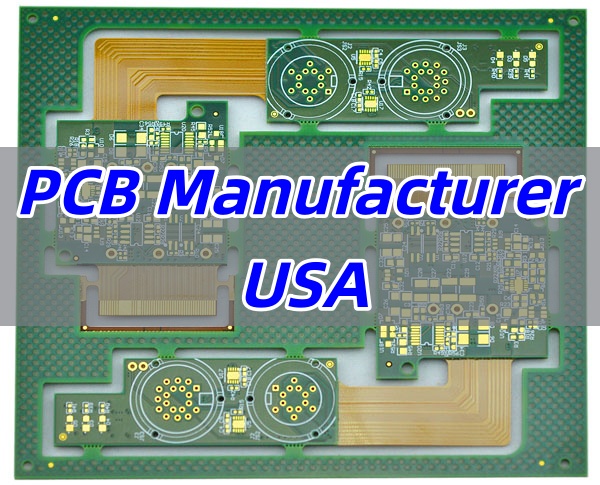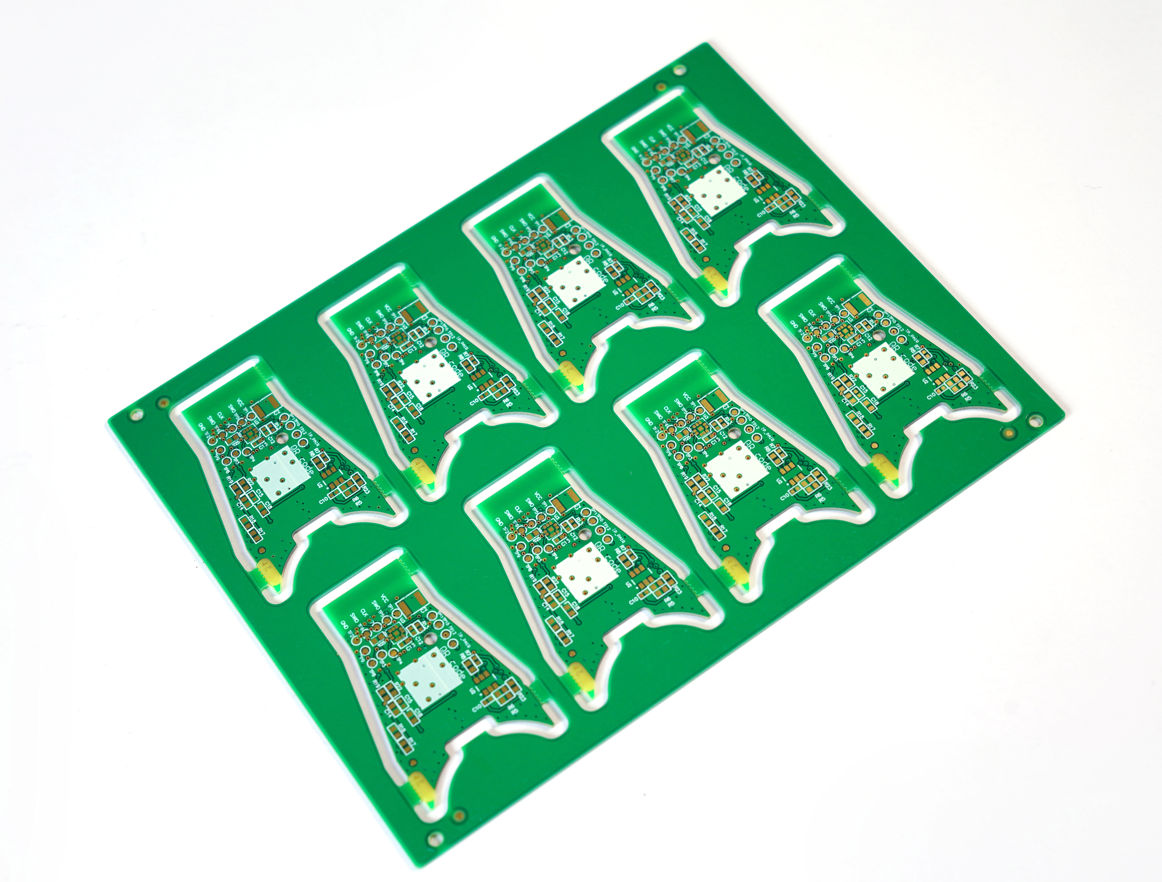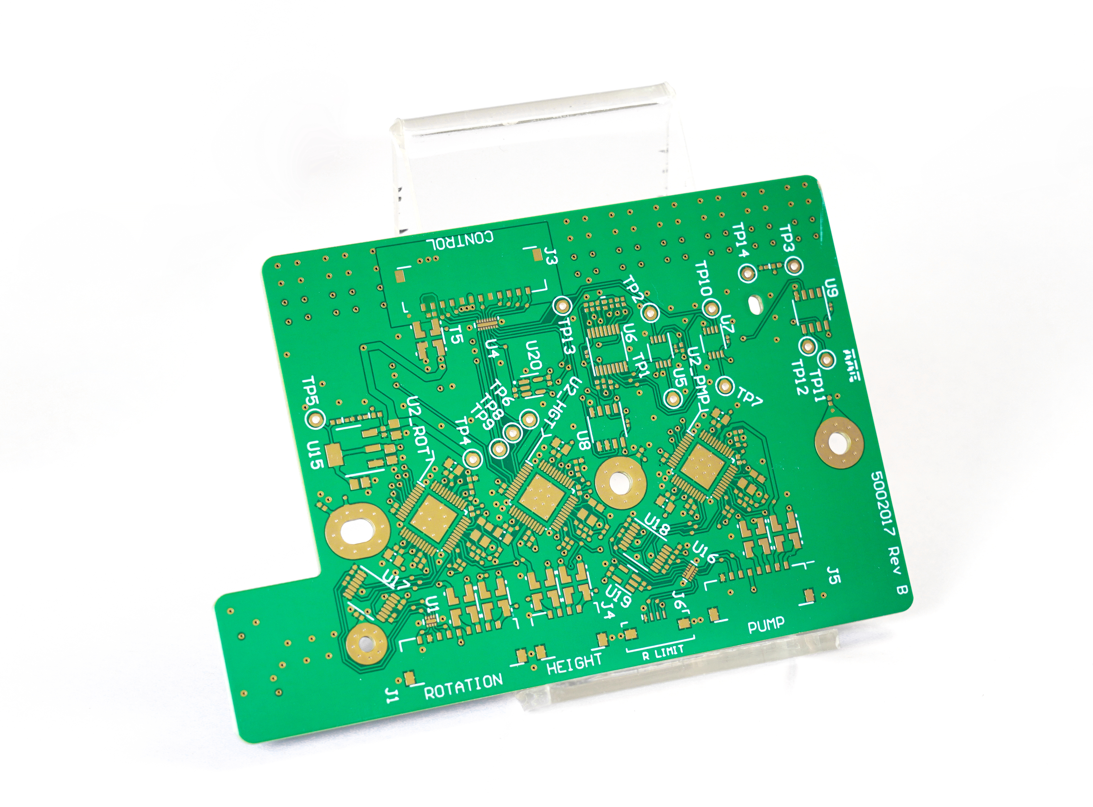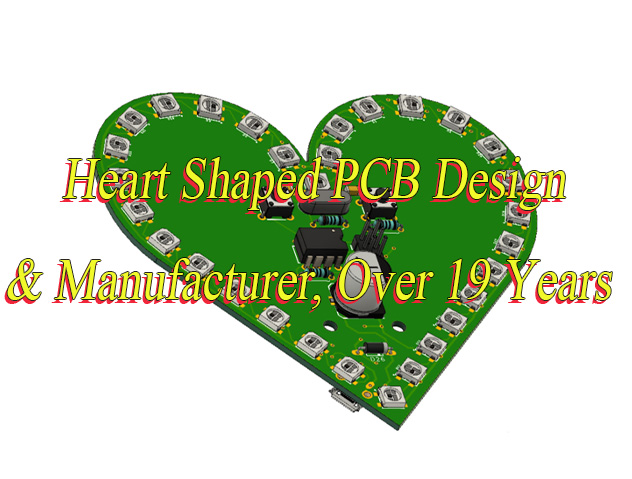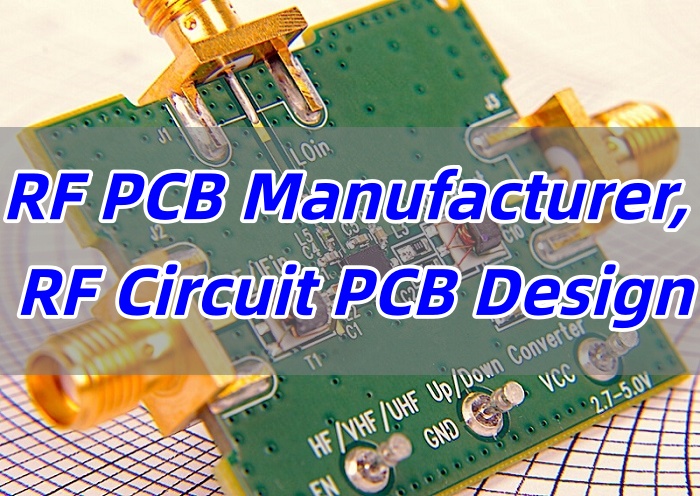HDI PCB manufacturing‚Äč is a specialized process that pushes the boundaries of electronics design. It allows for the creation of incredibly complex and powerful devices that fit in the palm of your hand. This blog explains the process, benefits, and how to choose the right manufacturer for your advanced projects.
Are you battling with signal integrity issues in your HDI PCB designs? Many engineers and product managers face these exact challenges when pushing their PCB HDI technology forward.
- ‚ÄčDifficulty achieving high component density‚Äč in a limited board space.
- ‚ÄčSignal loss and interference‚Äč in complex, high-speed designs.
- ‚ÄčManaging heat dissipation‚Äč in increasingly powerful but compact devices.
- ‚ÄčFacing high costs and long lead times‚Äč for sophisticated multi-layer boards.
- ‚ÄčFinding a manufacturer with the right expertise and technology‚Äč to bring an advanced design to life.
The good news is that these challenges have right solutions. By partnering with a skilled manufacturer, you can overcome these obstacles. Here is how a professional ‚ÄčHDI PCB manufacturer‚Äč addresses these points:
- Utilizing microvias and stacked vias to maximize routing density in a small area.
- Implementing precise impedance control and advanced materials to ensure clean signal transmission.
- Offering specialized materials and thermal management techniques to keep your device running cool.
- Providing cost-effective manufacturing strategies and reliable quick-turn services to meet your timeline and budget.
- Bringing years of specialized experience and state-of-the-art equipment like laser drilling machines to the table.
BEST Technology is a professional ‚ÄčHDI PCB manufacturing‚Äč factory focused on delivering high-quality, high-density interconnect solutions. Our team is dedicated to supporting your projects from the initial design review to final assembly. For a personal consultation, pls feel free to reach out to us at sales@bestpcbs.com.
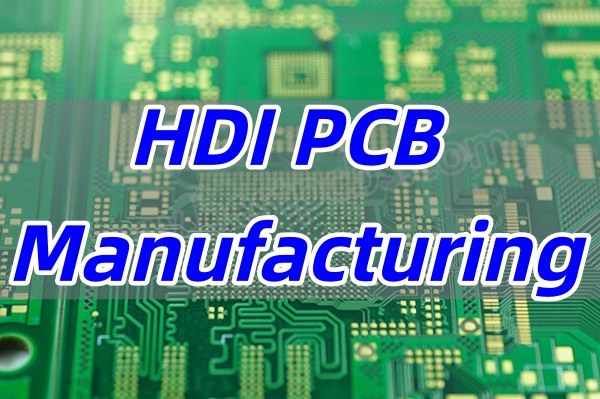
‚ÄčWhat Is HDI PCB Manufacturing?‚Äč‚Äč
At its heart, ‚ÄčHDI PCB manufacturing‚Äč is all about packing more functionality into a smaller space. It’s the advanced process of creating printed circuit boards with a significantly higher wiring density per unit area than conventional PCBs. Think of it as the difference between a wide, sprawling suburban neighborhood and a dense, efficient city skyline‚ÄĒboth serve a purpose, but one is built for maximum space efficiency and interconnection.
To truly grasp the ‚ÄčHDI PCB meaning, it’s helpful to understand its key building blocks:
- ‚Äč1. Microvias, Blind, Buried and Through Vias:‚Äč‚Äč These are the tiny, laser-drilled holes that make HDI possible.
- ‚ÄčMicrovias‚Äč are incredibly small holes, typically with a diameter of less than 0.15mm. They act as miniature tunnels connecting adjacent layers.
- ‚ÄčBlind Vias‚Äč connect an outer layer to an inner layer, but don’t go all the way through the board.
- ‚ÄčBuried Vias‚Äč connect inner layers only, remaining hidden within the board’s core.
- Through-holes refer to a hole that is open on both outer layers of a PCB, thereby connecting the two sides. This term encompasses via holes, plated through-holes (PTH), and non-plated through-holes (NPTH).
- ‚ÄčWhy they matter:‚Äč‚Äč By using these small, targeted vias instead of large through-holes, designers can save a tremendous amount of space. This freed-up real estate allows for more components and more complex routing.
- ‚Äč2. The Evolution to UHDI (Ultra High Density Interconnect):‚Äč‚Äč As technology pushes for even greater miniaturization, ‚ÄčUHDI‚Äč represents the next frontier. It involves even finer lines, smaller vias, and more advanced materials. If HDI is a dense city, UHDI is a city of micro-skyscrapers.
- ‚Äč3. The Role of a Specialized HDI PCB Manufacturer:‚Äč‚Äč Not every factory can produce these advanced boards. A specialized ‚ÄčHDI PCB manufacturer‚Äč invests in specific technology‚ÄĒlike laser drilling systems‚ÄĒand cultivates the expertise needed to manage the complex, sequential lamination processes involved. Choosing the right partner is crucial for success.
To truly understand what HDI PCBs are, let’s look at their key characteristics:
‚ÄčKey Features of HDI Technology:‚Äč‚Äč
- Uses laser drilling instead of mechanical drilling, with via diameters ‚ȧ0.15mm
- Microvias with bottom pads smaller than 0.25mm (10mil)
- Fine line width/spacing of 3/3mil or less
- Requires copper plating thickness ‚Č•15őľm in laser vias
- Aspect ratio (dielectric thickness to via diameter) ‚ȧ1:1
‚ÄčHow HDI Differs from Standard PCBs:‚Äč‚Äč
- Contains blind vias, buried vias, or both
- Requires multiple lamination cycles (‚Č•2 times)
- Involves multiple drilling and plating processes
- Features much denser routing on both inner and outer layers
- Has more complex manufacturing process and longer production cycles
In short, ‚ÄčHDI PCB manufacturing‚Äč is the enabling technology behind the powerful, compact electronics we rely on every day.
‚ÄčWhat Are the Types of HDI PCB Manufacturing Products?‚Äč‚Äč
‚ÄčThe world of HDI is diverse, offering solutions for many different applications. The types of products are primarily classified by their layer buildup structure, which refers to the number of sequential lamination cycles and the arrangement of microvias. Understanding these structures is key to selecting the right board for your project.
A crucial concept here is the “order” or “step” of an HDI board, often described by formulas like ‚Äča+N+a‚Äč or ‚Äča+N+N+a.
- ‚Äč
a‚Äč stands for the ‚ÄčBuild-up layer, which is formed using laser microvias. Each additional build-up layer on one side counts as one “step” or “order”. - ‚Äč
N‚Äč stands for the ‚ÄčCore layer, which is a traditional multilayer PCB with through-holes or buried vias. The value of N indicates the number of conductive layers within the core. For example, a 4-layer core is N=2 (counting internal layers), and an 8-layer core is N=4. This explains why “N” is often an even number.
Here is a clear outline of common HDI structures, from simple to complex:
‚Äč1. 1+N+1 (1-Step HDI)‚Äč‚Äč
This is the simplest form of HDI. It features a single build-up of high-density interconnection layers on both sides of a core. This is a cost-effective entry point for adding HDI features, allowing for finer lines and microvias while keeping the process relatively straightforward.

‚Äč2. 2+N+2 (2-Step HDI)‚Äč‚Äč
This structure involves two sequential HDI build-ups on each side. This allows for the use of stacked microvias (microvias placed directly on top of each other) or staggered microvias. It is ideal for designs requiring higher pin-count components and much greater routing density.

‚Äč3. 3+N+3 and Beyond (3-Step / Any-layer HDI)‚Äč‚Äč
These are the most complex and advanced boards. They feature three or more sequential laminations, enabling “any-layer” interconnection, where virtually any layer in the board can be interconnected with microvias. This enables incredibly high component density and is used in cutting-edge applications like flagship smartphones, network servers, and medical imaging equipment.

‚ÄčHDI vs. Mechanical Blind/Buried Vias‚Äč
It’s important to distinguish between laser-drilled HDI microvias and mechanically drilled blind/buried vias, as they represent different product types with distinct cost and capability profiles.
- ‚ÄčHDI (Laser Drilled):‚Äč‚Äč
- ‚ÄčMicrovia Aperture:‚Äč‚Äč ‚Č§ 0.15mm.
- ‚ÄčCharacteristics:‚Äč‚Äč Uses laser drilling for high positioning accuracy, enabling very small apertures. Employs RCC (Resin Coated Copper) or laser-specific prepreg as dielectric material.
- ‚ÄčApplications:‚Äč‚Äč High-end miniaturized products.
- ‚ÄčMechanical Blind/Buried Vias:‚Äč‚Äč
- ‚ÄčAperture:‚Äč‚Äč Typically ‚Č• 0.2mm.
- ‚ÄčCharacteristics:‚Äč‚Äč Uses mechanical depth-controlled drilling. Generally more cost-effective for larger diameter holes or high-volume production. Filled with resin or copper paste.
- ‚ÄčApplications:‚Äč‚Äč Applications requiring inter-layer connections but not the ultimate density.
‚ÄčComplex Structural Variations‚Äč
HDI technology allows for complex combinations to meet specific design needs, such as stacked microvias, staggered microvias, and mixed structures combining laser and mechanical vias. These advanced configurations provide maximum design flexibility for the most demanding applications.
‚ÄčBeyond the Layer Count: Other HDI Product Forms‚Äč
Furthermore, HDI technology is applied across various product forms to meet specific application needs:
- ‚ÄčHDI Rigid-Flex PCB Boards:‚Äč‚Äč Combine the durability of rigid boards with the flexibility of flexible circuits, using HDI technology to maximize density in the rigid sections and interconnection points.
- ‚ÄčSpecialized High-Frequency HDI Boards:‚Äč‚Äč Utilize advanced dielectric materials with low loss tangent, combined with HDI design rules, to ensure signal integrity in high-speed digital and RF applications.
The goal of all these HDI PCB manufacturing products is always the same: to pack more performance and functionality into a smaller, lighter, and more reliable package. Understanding these types and structures helps in selecting the optimal product for your project’s specific needs, balancing complexity, performance, and cost.
‚ÄčWhat Is the Process of HDI PCB Fabrication?‚Äč‚Äč
The fabrication process for HDI PCBs is a highly precise and sequential operation that involves multiple cycles of lamination, drilling, and plating. This complex manufacturing process requires strict process controls and advanced equipment to achieve the high density interconnections characteristic of HDI boards. Here is the detailed manufacturing process of 3-Step HDI PCB:
‚ÄčStage 1: Core Layer Processing‚Äč
The foundation of HDI PCB starts with the core layer processing, which establishes the basic interconnection framework:
- ‚ÄčPanel Cutting‚Äč – The process begins with cutting the base copper-clad laminate to the required size for panel processing.
- ‚ÄčInner Layer Imaging‚Äč – The circuit pattern is transferred to the core using photolithography with a dry film resist.
- ‚ÄčAOI (Automated Optical Inspection)‚Äč‚Äč – The imaged inner layer circuits are automatically inspected for defects like opens, shorts, or pattern irregularities.
- ‚ÄčLamination‚Äč – Multiple inner layers are bonded together with prepreg under heat and pressure to form the core structure.
- ‚ÄčCopper Reduction‚Äč – Excess copper is chemically etched away to define the precise circuit traces.
- ‚ÄčLaser Drilling‚Äč – Microvias with diameters ‚ȧ0.15mm are ablated using a precision laser drill system.
- ‚ÄčMechanical Drilling‚Äč – Through-holes are drilled mechanically for layer-to-layer connections.
- ‚ÄčElectroless Copper Deposition‚Äč – A thin conductive copper layer is chemically deposited onto the entire panel, including the walls of all drilled holes.
- ‚ÄčVia Filling‚Äč – The vias are filled with conductive paste or resin to create a flat surface for subsequent layers.
‚ÄčStage 2: First Build-Up Layer (2nd Lamination Cycle)‚Äč‚Äč
The first HDI build-up layer adds additional interconnection density:
- ‚ÄčInner Layer Imaging‚Äč – Circuit pattern imaging for the first build-up layer using LDI (Laser Direct Imaging) for higher precision.
- ‚ÄčAOI (Automated Optical Inspection)‚Äč‚Äč – Comprehensive inspection of the imaged layer to ensure pattern accuracy.
- ‚ÄčLamination‚Äč – The first build-up dielectric layer is laminated onto the core structure.
- ‚ÄčCopper Reduction‚Äč – Copper is etched to define the fine-line circuits on this layer.
- ‚ÄčLaser Drilling‚Äč – Second-level microvias are drilled for the first build-up layer interconnection.
- ‚ÄčElectroless Copper Deposition‚Äč – Copper deposition ensures proper conductivity in the new microvias.
- ‚ÄčVia Filling‚Äč – The newly drilled microvias are filled to maintain surface planarity.
- ‚ÄčInner Layer Imaging‚Äč – Additional circuit patterning for complex routing requirements.
- ‚ÄčAOI‚Äč – Final inspection before proceeding to the next build-up layer.
‚ÄčStage 3: Second Build-Up Layer (3rd Lamination Cycle)‚Äč‚Äč
The second build-up layer further enhances the interconnection density:
- ‚ÄčLamination‚Äč – The second build-up dielectric layer is laminated onto the existing structure.
- ‚ÄčCopper Reduction‚Äč – Precision etching defines the circuits on this critical layer.
- ‚ÄčLaser Drilling‚Äč – Third-level microvias are drilled with high positioning accuracy.
- ‚ÄčMechanical Drilling‚Äč – Additional through-holes are drilled for final layer connections.
- ‚ÄčElectroless Copper Deposition‚Äč – Complete copper deposition ensures reliable conductivity.
- ‚ÄčVia Filling‚Äč – All microvias are properly filled to achieve the required surface flatness.
‚ÄčStage 4: Outer Layer Processing and Finalization‚Äč
The final stage completes the HDI PCB manufacturing:
- ‚ÄčOuter Layer Imaging‚Äč – The final circuit pattern is applied to the outer layers using high-precision LDI.
- ‚ÄčEtching‚Äč – Unwanted copper is precisely etched away from the outer layers.
- ‚ÄčAOI (Automated Optical Inspection)‚Äč‚Äč – Comprehensive final inspection of the completed circuitry.
- ‚ÄčSolder Mask Application‚Äč – A protective solder mask layer is applied to the outer surfaces.
- ‚ÄčSilkscreen Printing‚Äč – Identifying text, logos, and component symbols are printed.
- ‚ÄčSurface Finish (ENIG/ENEPIG)‚Äč‚Äč – A final surface finish is applied for solderability and protection.
- ‚ÄčProfile Routing‚Äč – Individual boards are routed out of the production panel.
- ‚ÄčElectrical Testing‚Äč – Each board undergoes comprehensive electrical testing for continuity and isolation.
- ‚ÄčFinal Inspection‚Äč – A complete visual, dimensional, and quality verification is performed.
‚ÄčCritical Process Control Parameters‚Äč
The success of HDI board fabrication depends on maintaining strict control over several key parameters:
- ‚ÄčLine Width/Spacing: Controlled at 3/3 mil or finer for high-density designs
- ‚ÄčAspect Ratio Management: Through-hole aspect ratio maintained below 5:1 for 7-9mm board thickness
- ‚ÄčLaser Via Alignment: Stacked via alignment accuracy within ¬Ī25őľm
- ‚ÄčDimensional Stability: Process controls to manage material swell/shrink within ¬Ī0.05%
- ‚ÄčCopper Thickness: Laser microvia copper thickness ‚Č•15őľm ensured
- ‚ÄčDielectric Thickness: Consistent dielectric layer thickness control for impedance management
This precise, multi-cycle manufacturing process enables the creation of sophisticated HDI PCBs that meet the demanding requirements of modern electronic devices, providing the high density interconnections necessary for advanced applications while maintaining reliability and performance standards.

‚ÄčWhy Choose an HDI PCB Manufacturer in China?‚Äč‚Äč
Selecting a manufacturing partner is a strategic decision. For many global companies, partnering with a ‚ÄčHDI PCB manufacturer in China‚Äč offers a distinct competitive edge. This advantage stems from a powerful combination of factors:
- ‚ÄčUnmatched Supply Chain Ecosystem:‚Äč‚Äč China’s concentrated electronics industry means ‚ÄčHDI PCB manufacturing suppliers‚Äč have immediate access to high-quality raw materials and components, reducing logistics costs and delays.
- ‚ÄčConcentrated Expertise and Experience:‚Äč‚Äč The region has been at the forefront of PCB production for decades. Many ‚ÄčHDI PCB manufacturing factories‚Äč possess deep, practical knowledge gained from handling countless complex projects.
- ‚ÄčSignificant Investment in Advanced Technology:‚Äč‚Äč To stay competitive, leading Chinese manufacturers heavily invest in state-of-the-art equipment, such as advanced laser drilling machines and automated inspection systems.
- ‚ÄčExcellent Cost-Effectiveness:‚Äč‚Äč The scale of manufacturing and efficient operations allows for competitive pricing without compromising on quality, offering outstanding value.
- ‚ÄčIntegrated Services (One-Stop Shop):‚Äč‚Äč Many leading ‚ÄčHDI PCB manufacturers in China‚Äč offer integrated services, from ‚ÄčHDI PCB fabrication‚Äč to full ‚ÄčHDI PCB assembly. This simplifies your supply chain and accelerates time-to-market.
‚Äč3-Step HDI PCB Manufacturer – Best Technology‚Äč
Best Technology is a leading specialist in manufacturing complex 3-Step HDI (High-Density Interconnect) PCBs. With over 19 years of industry experience and a monthly production capacity of 28,900 square meters, we have the expertise and scale to bring your most advanced electronic designs to life.
Our focus on precision engineering and rigorous quality control makes us the ideal partner for industries where miniaturization, high speed, and reliability are critical, including:
- Advanced telecommunications
- Medical electronics
- High-performance computing
A 3-Step HDI process involves three sequential lamination cycles, enabling highly complex interconnect architectures essential for modern, compact, high-pin-count devices.
This advanced capability allows for:
- Stacked or staggered microvias
- Efficient routing under fine-pitch BGAs
- Enhanced signal integrity
These features are crucial for designing boards that meet the demands of next-generation electronics. To ensure the highest quality, we utilize state-of-the-art equipment, including Automated Optical Inspection (AOI) and Laser Direct Imaging (LDI). These systems allow us to deliver 3-Step HDI PCBs that consistently meet the strictest performance standards.
‚ÄčWhy Choose Best Technology for HDI PCB Manufacturing?‚Äč
‚ÄčSelecting the right manufacturing partner is crucial for the success of any HDI PCB project. It requires a blend of advanced technical capabilities, a commitment to quality, and a service-oriented approach. Best Technology offers a compelling combination of these factors, providing a reliable and efficient manufacturing experience.
Here are the key reasons to partner with us for your HDI needs:
- ‚ÄčFull Turnkey Solution and Extensive Experience:‚Äč‚Äč We simplify your supply chain by offering a comprehensive one-stop service. From initial ‚ÄčPCB design and DFM (Design for Manufacturability) advice‚Äč to component sourcing, ‚ÄčPCB assembly, and final box build, we manage the entire process. Founded in 2006, our 19 years of experience mean we have the expertise to anticipate challenges and ensure your project’s success from concept to completion.
- ‚ÄčUncompromising Quality and Certifications:‚Äč‚Äč Quality is embedded in our operations. We hold internationally recognized certifications, including ‚ÄčISO9001:2015, IATF16949, and ISO13485:2016, which validate our commitment to consistent quality management systems. Our strict quality control procedures cover every stage of production, from raw material inspection to final electrical testing, ensuring every HDI board we deliver is reliable and high-performing.
- ‚ÄčAdvanced Technical Capability and Engineering Support:‚Äč‚Äč Our technical capabilities, detailed in the section below, are tailored for advanced HDI manufacturing. Beyond machinery, we provide dedicated ‚Äčone-on-one engineering sales support. This service ensures that your design is optimized for manufacturability and cost-effectiveness before production begins, reducing time-to-market and avoiding potential issues.
- On-Time Delivery:‚Äč‚Äč We are committed to offering high-quality PCB solutions through efficient production and cost management. Furthermore, we understand the importance of deadlines. Our streamlined processes and online WIP (Work In Progress) updates ensure ‚Äč97% on-time delivery, allowing you to plan your projects with confidence.
‚ÄčTo sum up, our blend of technical expertise, quality assurance, comprehensive service, and reliable delivery makes us the ideal choice for your demanding HDI PCB requirements.
‚ÄčTechnical Capability for HDI PCB Design‚Äč
‚ÄčTo ensure the successful manufacture of your High-Density Interconnect (HDI) printed circuit boards, designing within specific technical parameters is crucial. The following details Best Technology’s comprehensive manufacturing capabilities, which are designed to guide your design process effectively. The data presented reflects our standard production capabilities as well as our advanced limits for specialized or prototype projects.
‚Äč1. Laser Drilling & Microvia Capability‚Äč
The foundation of HDI technology lies in creating microvias. Our advanced laser drilling technology ensures high precision and reliability for the most demanding designs.
- ‚ÄčLaser Drill Minimum Diameter:‚Äč‚Äč Our standard capability is ‚Äč0.10mm, with a limit of ‚Äč0.070mm‚Äč available for prototype orders.
- ‚ÄčMicrovia Aspect Ratio:‚Äč‚Äč We support an aspect ratio of up to ‚Äč1:1, which is essential for creating reliable, high-density interconnects.
- ‚ÄčMicrovia Copper Thickness:‚Äč‚Äč We maintain a standard copper thickness of ‚Äč‚Č• 15őľm within microvias to ensure excellent electrical conductivity and long-term reliability.
‚Äč2. Fine Line & Space Technology‚Äč
HDI designs require dense routing to accommodate complex circuitry in a compact space. Our advanced imaging and etching processes support the following minimum trace and space widths (based on client original artwork):
- ‚ÄčInner Layer (1/1 OZ base copper):‚Äč‚Äč
- ‚ÄčStandard Capability:‚Äč‚Äč 4/4.5 mil (line/space)
- ‚ÄčLimit Capability:‚Äč‚Äč 3.5/3.5 mil (line/space)
- ‚ÄčOuter Layer (1/1 OZ base copper):‚Äč‚Äč
- ‚ÄčStandard Capability:‚Äč‚Äč 3.5/4 mil (line/space)
- ‚ÄčLimit Capability:‚Äč‚Äč 3/3 mil (line/space)
‚Äč3. Layer Stack-Up and Registration Accuracy‚Äč
Managing complex layer structures with high precision is critical for multi-step HDI boards. Our capabilities ensure perfect alignment and integrity throughout the stack-up.
- ‚ÄčMaximum Manufacturing Layers:‚Äč‚Äč We routinely produce boards with up to ‚Äč50 layers, and have the capability to support designs of up to ‚Äč100 layers, subject to a technical review to ensure optimal quality.
- ‚ÄčLayer-to-Layer Registration Accuracy:‚Äč‚Äč We achieve a standard registration accuracy of ‚Äč‚Äč‚ȧ 0.15mm, with a high-precision limit of ‚Äč‚Äč‚ȧ 0.13mm. This exceptional alignment is critical for the success of complex 3-Step HDI designs with stacked or staggered microvias.
‚Äč4. Material Expertise for HDI Applications‚Äč
We are proficient in processing a wide range of high-performance materials to meet the electrical and thermal requirements of various HDI applications.
- ‚ÄčStandard & High-Tg FR4:‚Äč‚Äč We offer a range of materials suitable for general use and thermally demanding applications, ensuring board stability under high operating temperatures.
- ‚ÄčHigh-Speed/Low-Loss Materials:‚Äč‚Äč For designs where signal integrity is paramount, we work with leading material brands such as ‚ÄčRogers, Taconic, and Isola‚Äč to minimize signal loss and maintain integrity in high-frequency applications.
‚ÄčAll in all, by designing within these proven capabilities, you can ensure your HDI PCB is both highly manufacturable and reliable. Leveraging Best Technology’s advanced engineering and production expertise allows you to push the boundaries of innovation while minimizing risk, ensuring your product achieves its full performance potential.
‚ÄčLaser Drilling Machine for HDI PCB Manufacturing in China‚Äč
The microvia is the cornerstone of any HDI board. Creating these tiny, precise holes reliably and consistently requires one key piece of technology: an advanced laser drilling machine.
Here‚Äôs why this investment is critical for quality in ‚ÄčHDI PCB manufacturing in China:
- ‚ÄčPrecision at Micro-Scale:‚Äč‚Äč Our laser drilling systems can create microvias with diameters smaller than 100 microns (0.1mm) with exceptional accuracy. Mechanical drills simply cannot achieve this level of fineness.
- ‚ÄčClean and Consistent Holes:‚Äč‚Äč The laser creates clean, ablated holes without causing excessive stress or tearing in the surrounding material. This consistency is vital for reliable plating and electrical connection.
- ‚ÄčEnabler for High Density:‚Äč‚Äč This precision is what makes the high wiring density of HDI boards possible. It allows for the dense arrays of blind and buried vias that define advanced ‚ÄčPCB HDI technology.
Our commitment to maintaining state-of-the-art ‚Äčlaser drilling machine for HDI PCB manufacturing‚Äč is a direct investment in the quality and capability we can offer our customers.
‚ÄčWhat Certifications Should a Reliable HDI PCB Manufacturing Factory Have?‚Äč‚Äč
Trust must be verifiable. International certifications are the clearest proof of a factory’s commitment to quality and reliability. When auditing potential partners, look for these key certifications:
- ‚ÄčISO 9001:‚Äč‚Äč This certifies the company has an effective Quality Management System in place. It’s the fundamental baseline for a reliable operation.
- ‚ÄčIATF 16949:‚Äč‚Äč Essential for supplying the automotive industry, this standard focuses on continuous improvement, defect prevention, and reducing variation in the supply chain. It indicates a very high level of process control.
- ‚ÄčISO 13485:‚Äč‚Äč This is specific to medical devices. Certification demonstrates that the manufacturer meets the stringent quality and traceability requirements critical for healthcare applications.
- ‚ÄčUL Listing:‚Äč‚Äč Underwriters Laboratories (UL) is a leading safety certification. A UL listing means the PCB materials and construction meet specific safety standards, which is often a requirement for products sold in North America.
At BEST Technology, we maintain these certifications not as mere badges, but as the operational framework for everything we do. They provide you with confidence that your products are built to last.
‚ÄčCase of Quick-Turn Wholesale HDI PCB Manufacturing by Best Technology‚Äč
A client required a batch of 8-layer HDI PCBs for a new networking device. The project faced two major constraints:
- Time: Extremely short time-to-market demanded a quick-turn production cycle.
- Performance: The design required high-density interconnects (HDI), impedance control, and high-Tg materials for reliability.
Traditional manufacturers often force a compromise between speed and advanced capabilities. This case illustrates how Best Technology delivers both.
We tackled the challenge with a streamlined, application-focused workflow:
Rapid DFM Analysis
- Within hours of receiving the files, our engineering team performed a Design for Manufacturability (DFM) check.
- This proactive step identified potential production issues related to trace spacing and via design, preventing costly delays.
Material & Process Optimization
- Immediately allocated high-Tg FR4 materials from stock.
- Flexible production lines were configured for HDI processes, enabling a seamless transition from prototyping to full production.
Critical Process Execution
- Laser Drilling: Achieved precise 0.10mm laser microvias for dense interconnections.
- Fine-Line Imaging: Maintained consistent 3/3 mil inner layer trace/space to meet strict impedance requirements.
- Controlled Surface Finish: Applied ENIG (Immersion Gold) on pads for superior solderability and Hard Gold Plating on connectors for durability.
- Guaranteed On-Time Delivery: Quality control (AOI, E-test) ensured 100% reliability despite the accelerated schedule.
The success of this quick-turn HDI project relied on the following capabilities:
- Advanced Material Support: Immediate access to high-Tg (>180¬įC), halogen-free, high-speed materials (e.g., Rogers, Taconic).
- HDI & Micro-Via Expertise: Laser-drilled blind vias as small as 0.10mm.
- High-Layer-Count Manufacturing: Ability to produce up to 32-layer boards.
- Fine-Line Precision: 3/3 mil trace/space for complex, high-speed designs.
- High Aspect Ratio Support: Through-hole aspect ratios up to 10:1 for reliable plating in thick boards.
- Comprehensive Surface Finishes: ENIG, ENEPIG, Immersion Silver, Hard Gold, and more.
- Precision Mechanical Machining: Tight outline tolerances of ¬Ī4 mil and expert gold finger bevelling.
Best Technology merges rapid prototyping workflows with sophisticated HDI manufacturing. We are not just a supplier but a strategic partner, enabling clients to accelerate development without compromising performance or quality.
In ‚Äčconclusion‚Äč, HDI PCB manufacturing‚Äč is the critical engine behind the continued miniaturization and performance gains we see in modern technology. This guide has explored its processes, benefits, and what to look for in a manufacturing partner.
For your most demanding projects, you need a partner with proven expertise, advanced technology, and a commitment to quality. BEST Technology is that partner. We specialize in complex HDI, including advanced 3-step constructions, and rigid-flex boards. Pls contact us today at ‚Äčsales@bestpcbs.com‚Äč for a personal consultation and a quick quote.





